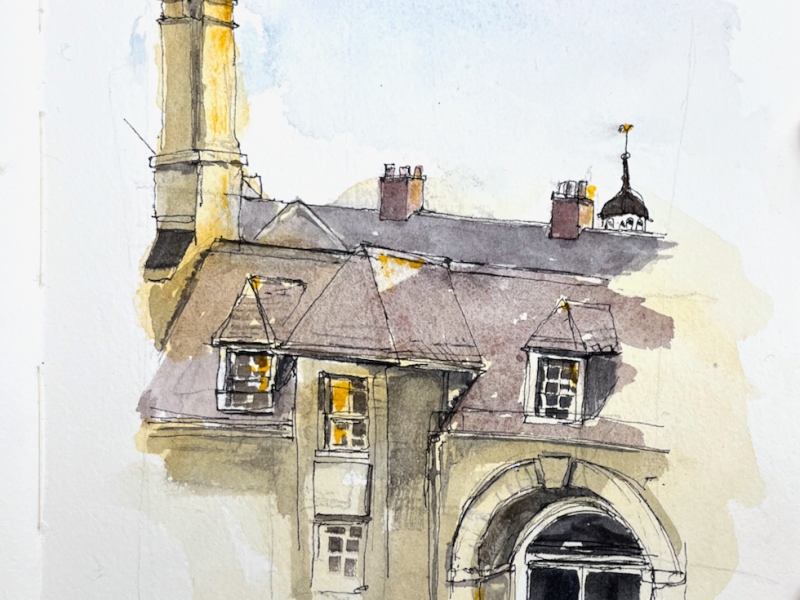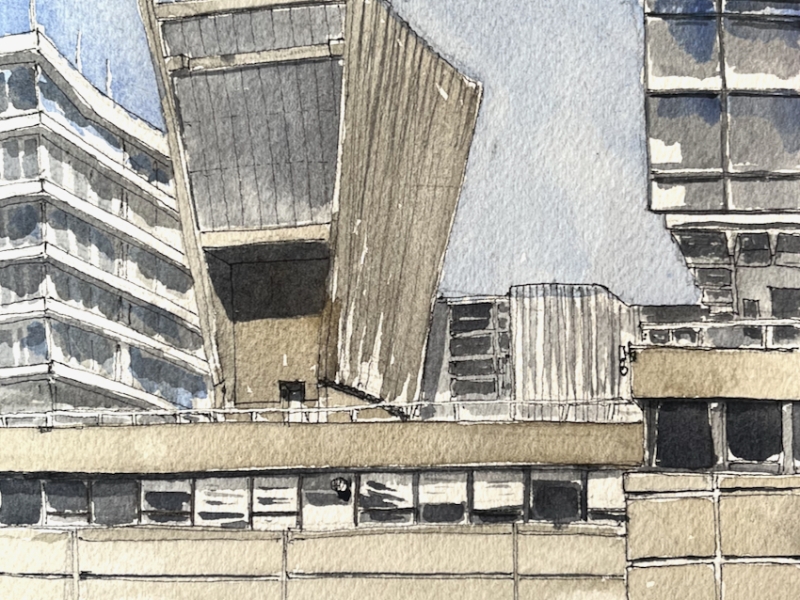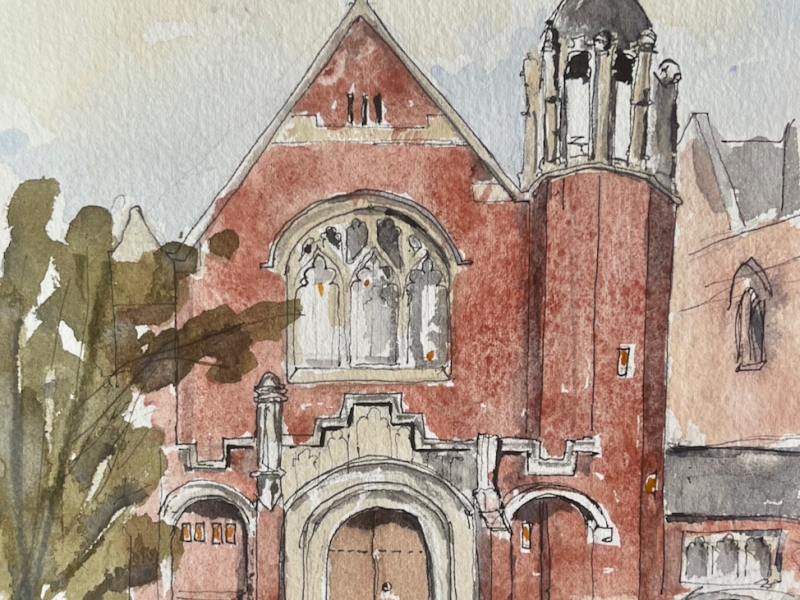Here is The Horseshoe, in Clerkenwell Close.

I enjoyed the way the pub is slotted into that corner space, amongst the taller buildings. The building behind it looks as though it might be older than the pub. The arched window-alcove to the left, above the car, has been partly obscured by the wall of the pub. The purpose of this alcove is unclear. It isn’t an ordinary window, and can’t let much light into the building as it is so recessed. It looks as though it might have had some industrial purpose.
And much is happening at roof level. On the right of the pub, high up, someone has made a roof garden. They have a glasshouse, and a weathervane in the shape of a whale. Behind that, even higher up, is a huge bridge-like construction, with arched supports, which looks as though it is a roof on top of a courtyard, behind the buildings I could see. Notice also the formidable collection of communications equipment: a satellite dish and three aerials near the whale, and on the building in the background there were at least two mobile phone masts, with antennae like loudspeakers, pointing in different directions.
The pub itself has a roof garden, with brightly coloured bunting and many flowerpots. I drew this picture yesterday, during Lockdown 2, so sadly it is closed. However it is going on my “After Lockdown” list.
Here are maps:
Here are sketches of work in progress, and some snapshots of the location. I did a preliminary sketch on brown paper, as you see. It was cold, 6 degrees C. I didn’t manage to finish the colour outdoors, but scuttled home to complete the detail in the warm.
This picture took about 1 hour 45 minutes on location, including a chat with a friend who passed by on his afternoon stroll. Then another half hour at home working on the colour detail. The colours are: Phthalo Turquoise (W&N), Burnt Umber (DS), Mars Yellow (DS), Green Apatite Genuine (DS), Fired Red Ochre (DS), with some Perylene Maroon and Prussian Blue to get the greys, and a few dots of Transparent Pyrrol Orange, Hansa Yellow Mid, and Green Gold (all DS). The picture is size 7 inches by 10 inches on Arches Aquarelle 300gsm watercolour paper, in a Wyvern sketchbook (Sketchbook 9)
This is one of an emerging series of drawings of pubs in the Clerkenwell area. Here are some others in the series:
The Sekforde, Clerkenwell
I sketched The Sekforde, sitting on a step on the other side of the road. The pub was closed today. It looked like a good pub. While I was sketching I received confirmation of this. Two portly men strolled past, paused, and asked me if I was waiting for the pub to open. I said…
Jerusalem Tavern, Britton St
Here is a sketch of The Jerusalem Tavern, Britton St, Clerkenwell, made as the light faded. I find this a particularly lovely building. The curves over the windows are semicircles and there is a pleasing symmetry to the upper floors. The semicircle over St John’s Passage exactly matches the door to its left, on another…
The Eagle, 2 Shepherdess Walk
Here is The Eagle. This is a very old pub, located at a significant junction on City Road. In the picture above, the alley on the right of the pub is called “Shepherdess Place”. It leads to a police car park, and several office blocks. I went down there to draw a picture of The…
Update:
I discovered this picture of the pub in 1972:

































































































































